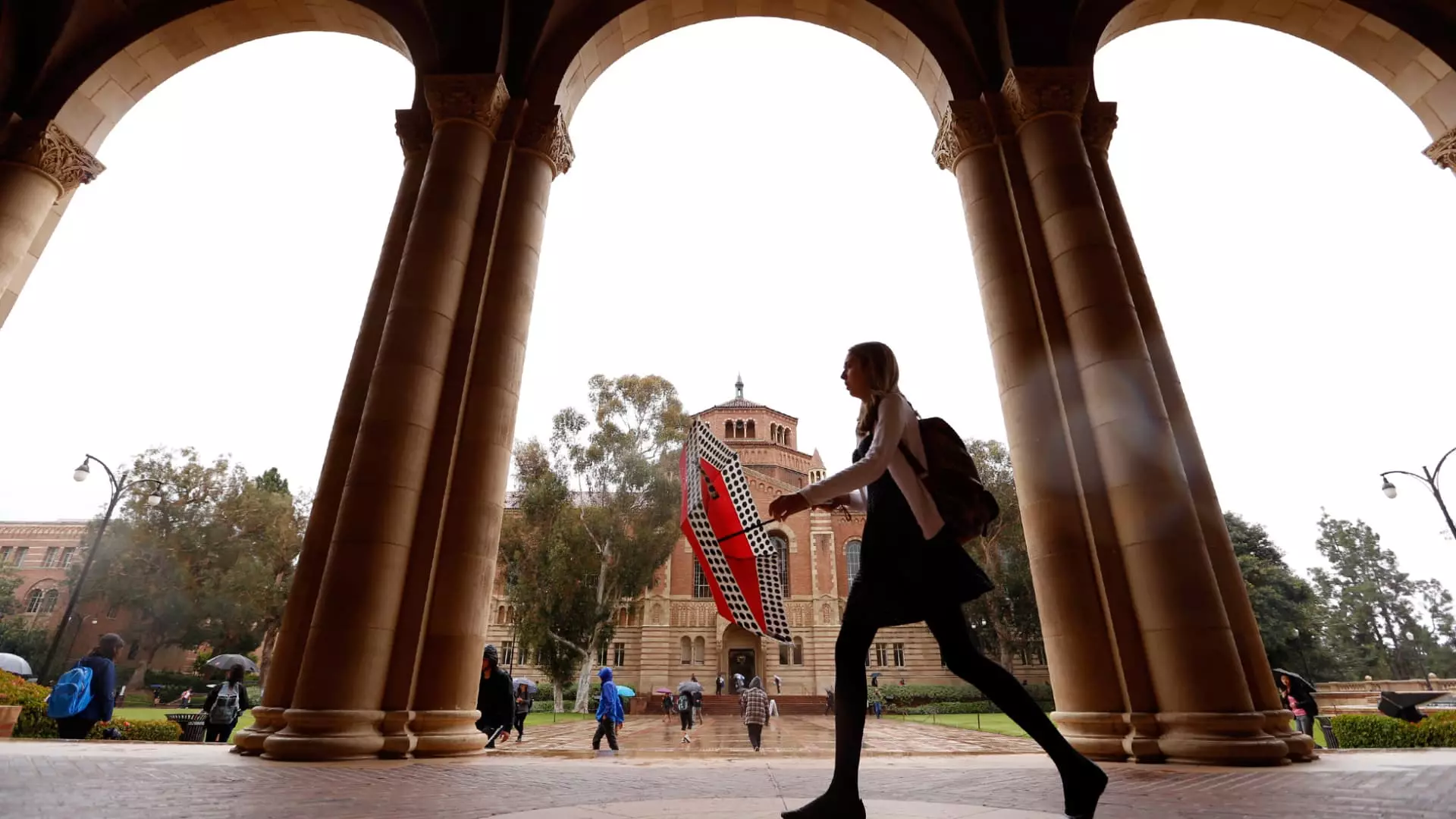Despite the expansion of federal financial aid eligibility, a concerning trend has emerged: fewer high school students are opting for four-year college degrees. Insights from the National Student Clearinghouse Research Center highlight a notable 5% drop in freshers this fall compared to the previous year, marking the first decline since the COVID-19 pandemic disrupted education systems. This shift raises questions about the accessibility of higher education and its implications for future generations. While overall undergraduate numbers remain stable—largely due to returning students and those at community colleges—the significant decline in new first-year students, particularly at four-year institutions, points to growing barriers to entry.
Traditionally, Pell Grants have served as a crucial financial lifeline for low- and middle-income students aspiring to pursue higher education. Recent modifications to the Free Application for Federal Student Aid (FAFSA) aim to enhance accessibility by broadening the criteria for Pell Grant eligibility. Data from the Department of Education indicates an increase in the number of students potentially qualifying for these funds, with a 10% upward trend observed in receipts this year. However, it is essential to juxtapose this with the stark realization that overall Pell Grant recipients have actually decreased—plummeting from over 9 million in 2011 to just 6.4 million in 2023-24.
As Pell Grant awards remain insufficient in compensating for skyrocketing tuition costs, the value of financial aid diminishes further. The maximum Pell Grant increased to $7,395 after a $500 rise for the 2023-24 academic year, yet the average tuition and fees, alongside room and board for private four-year institutions, burgeoned to about $58,600—making higher education increasingly unattainable for many. This dissonance breeds skepticism among students regarding the return on investment of a college degree.
Accompanying these financial trends is a palpable shift in student preferences regarding educational pathways. The frustrations tied to the FAFSA process have, unfortunately, led many prospective students to rethink their higher education strategies. Approximately 12% of recent high school graduates reported opting for alternative routes, such as community colleges or technical programs, due to disillusionment with financial aid processes. Data revealed from the Jenzabar/Spark451 survey underscores how rising concerns over affordability influence student decisions, signaling a growing tendency to question the value of conventional degree paths.
This transition occurs against a backdrop of increasing awareness regarding student debt, leading many to pursue shorter-term accreditation programs instead. With recent figures illustrating a 7.3% surge in enrollment within certificate programs, it’s apparent that students are gravitating towards more economically viable options. This shift not only highlights a transformation in personal educational goals but similarly underscores the broader implications of systemic fear surrounding debt and financial security in the current socio-economic landscape.
The implications of these changes extend beyond mere enrollment statistics. A declining first-year cohort, particularly in institutions supporting low-income students, poses a challenge to the existing educational framework—one that is increasingly becoming exclusive to economically privileged demographics. As four-year colleges encounter enrollment dips, institutions must grapple with the financial ramifications of decreased tuition revenue while striving to maintain academic standards and support services.
Furthermore, the erosion of confidence in the sustainability of higher education hinders efforts to cultivate a diverse workforce equipped with necessary 21st-century skills. As more students shy away from traditional degree programs, the potential for economic mobility among marginalized groups becomes increasingly compromised. The feedback loop of limited access to higher education can entrench existing socio-economic disparities, making it imperative that stakeholders—including policymakers, educational institutions, and community organizations—collaborate to address this pressing issue.
As the landscape of higher education continues to evolve, the dichotomy surrounding access and affordability has never been more pronounced. The confluence of declining enrollment in four-year institutions, shifting student preferences, and financial aid complexities presents a multifaceted challenge that needs urgent attention. Educators and policymakers must work collaboratively to reform financial aid processes, reevaluate institutional practices, and explore alternative educational models that can effectively meet the needs of today’s students. Through such efforts, there is hope for a future in which access to higher education stands as a persistent reality rather than a fleeting ideal, empowering all students to achieve their full potential without the looming shadow of financial uncertainty.

